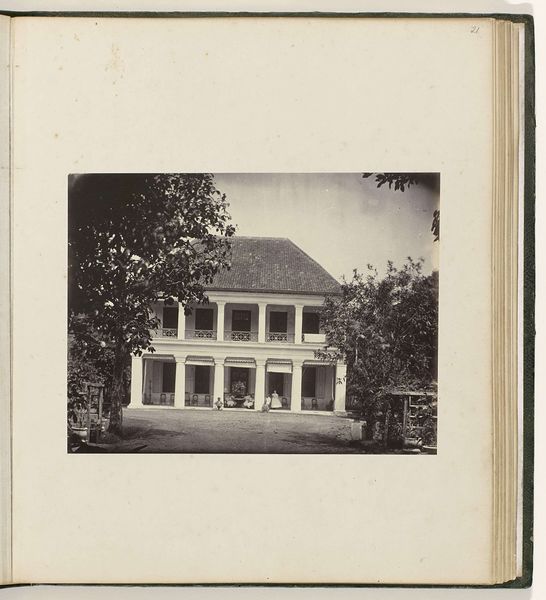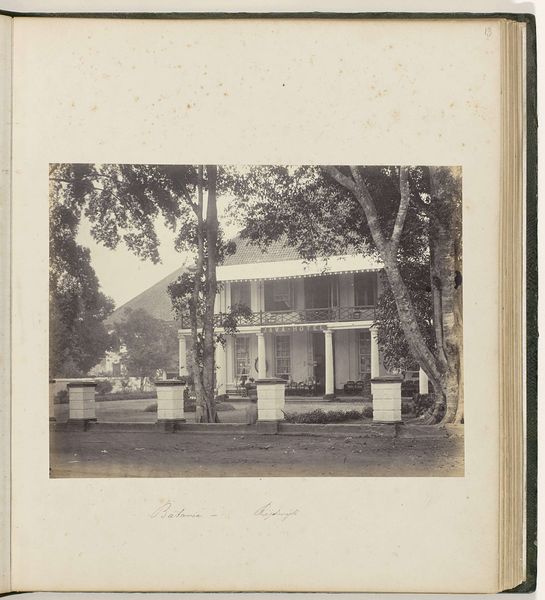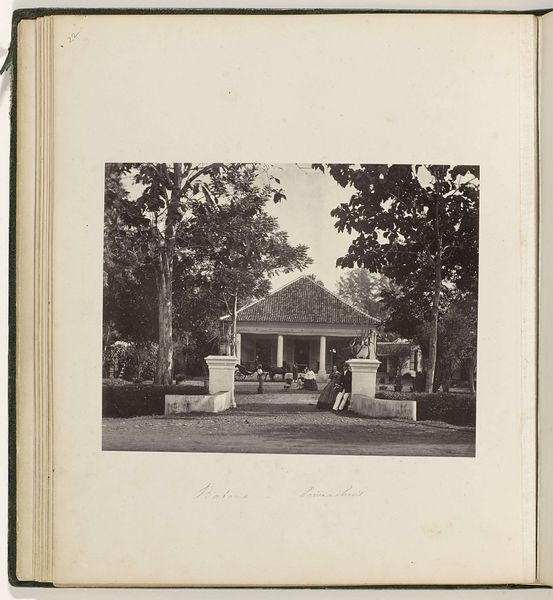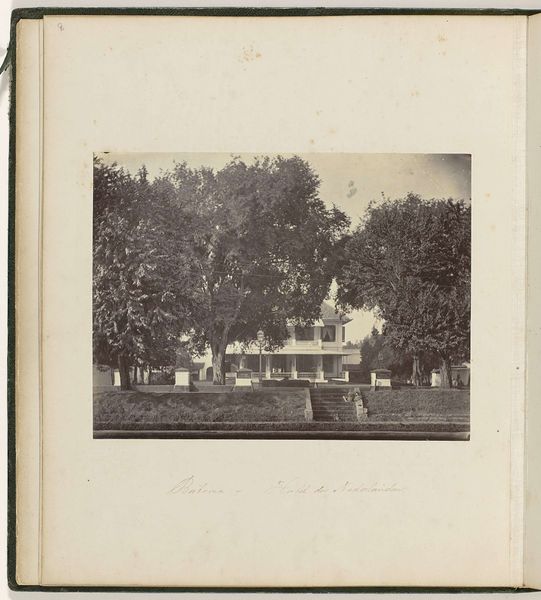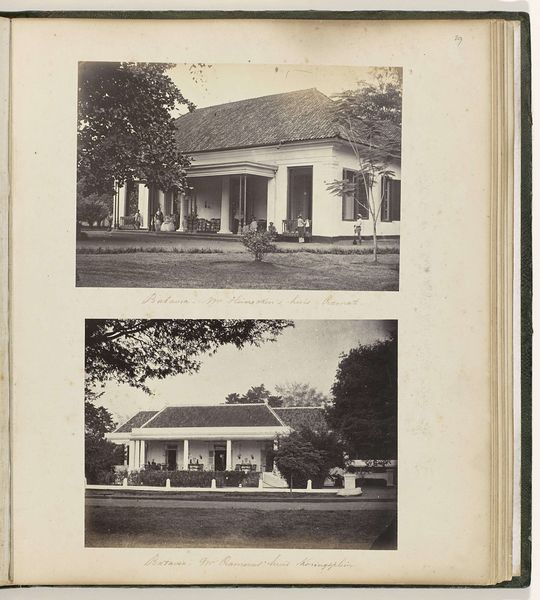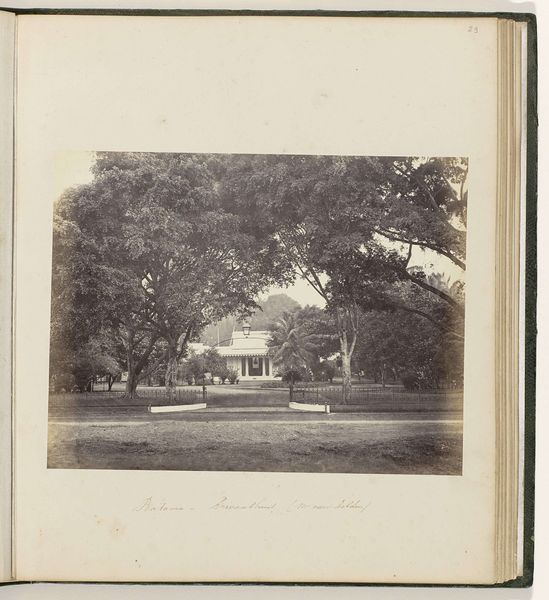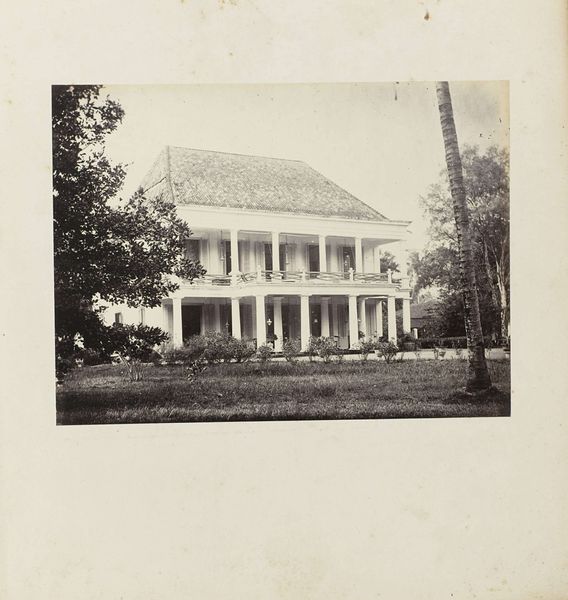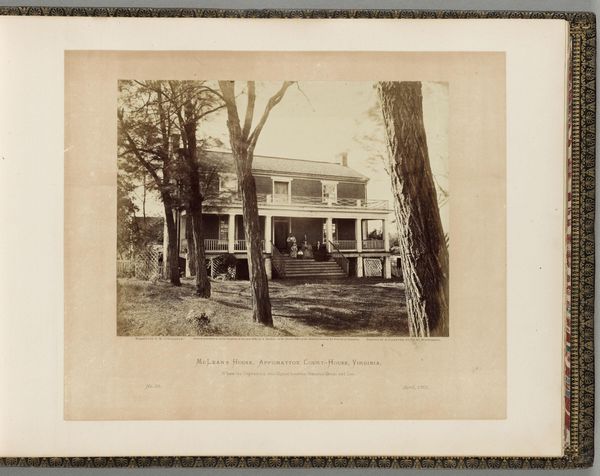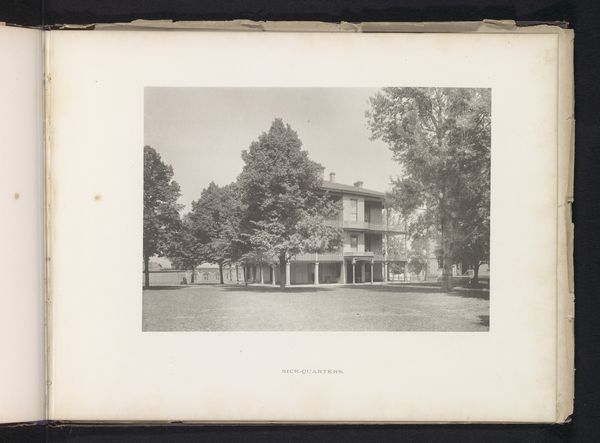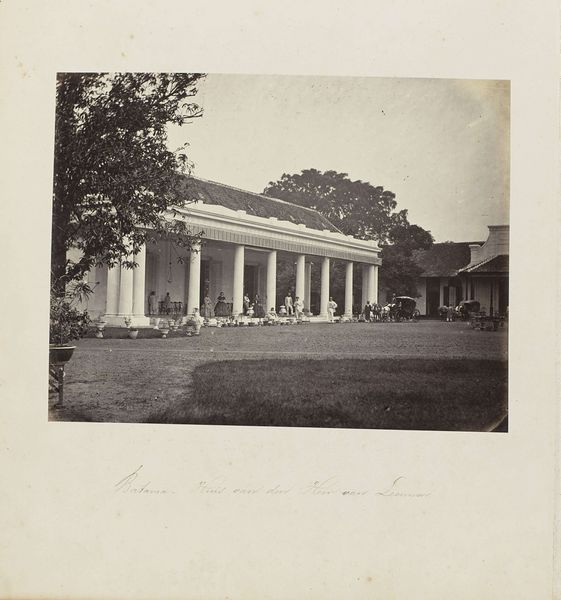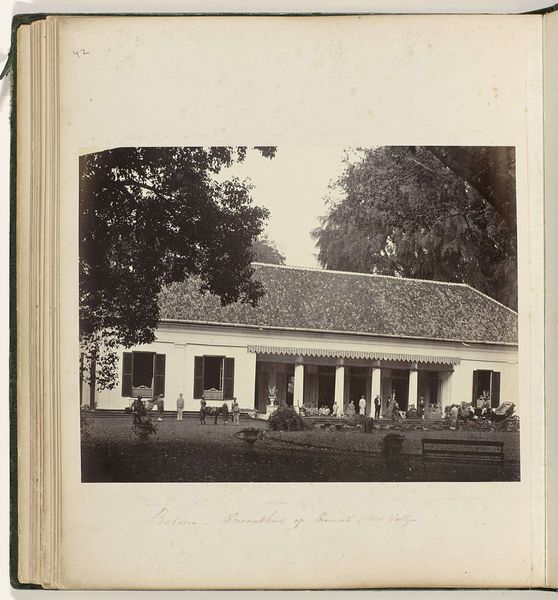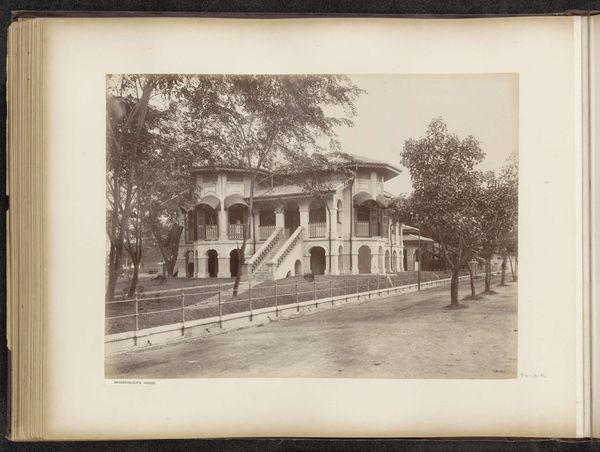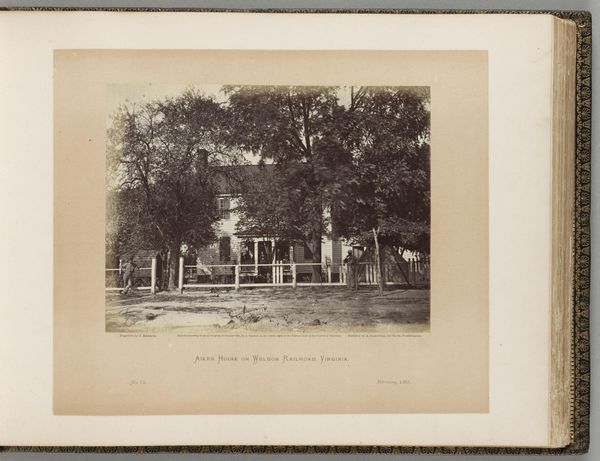
photography, gelatin-silver-print
#
dutch-golden-age
#
landscape
#
photography
#
orientalism
#
gelatin-silver-print
#
cityscape
Dimensions: height 209 mm, width 268 mm
Copyright: Rijks Museum: Open Domain
Editor: So, this gelatin-silver print is titled "Batavia - Rijswijk," created between 1863 and 1866 by Woodbury & Page, currently at the Rijksmuseum. It gives me a strangely intimate, yet detached, feeling, like a glimpse into a past both familiar and foreign. What stands out to you about this photograph? Curator: The albumen print presents a potent image of Dutch colonial power in the East Indies. Think about what the image chooses to show: the Governor-General's residence. These colonial architectural elements intentionally mimic European styles, signaling a transfer of power and 'civilization'. It's not just a landscape; it's a visual statement of control. Who do you think the intended audience of this image was, and what purpose did it serve? Editor: I imagine it was intended for a European audience, perhaps to showcase the reach and influence of the Dutch empire, a sort of... visual propaganda? The very act of documenting these locations and buildings is to claim it? Curator: Exactly. Photography at this time played a significant role in constructing narratives about the colonies. By capturing images of order and European presence, colonial administrations reinforced their authority and presented a specific, controlled image to the outside world, often obscuring the realities of colonial exploitation. What isn't shown is as telling as what is. Editor: So, the serene appearance of the house and grounds contrasts with the political realities of the time, concealing tensions? It's definitely thought-provoking how seemingly simple imagery carries so much historical and political weight. Curator: Precisely. Looking at this image now prompts us to consider the complex relationship between photography, colonialism, and the construction of historical narratives. We need to critically assess what stories these images tell and, more importantly, what stories they leave untold. Editor: This really highlights how images shape public perception and understanding. Thanks, I learned a lot!
Comments
No comments
Be the first to comment and join the conversation on the ultimate creative platform.
